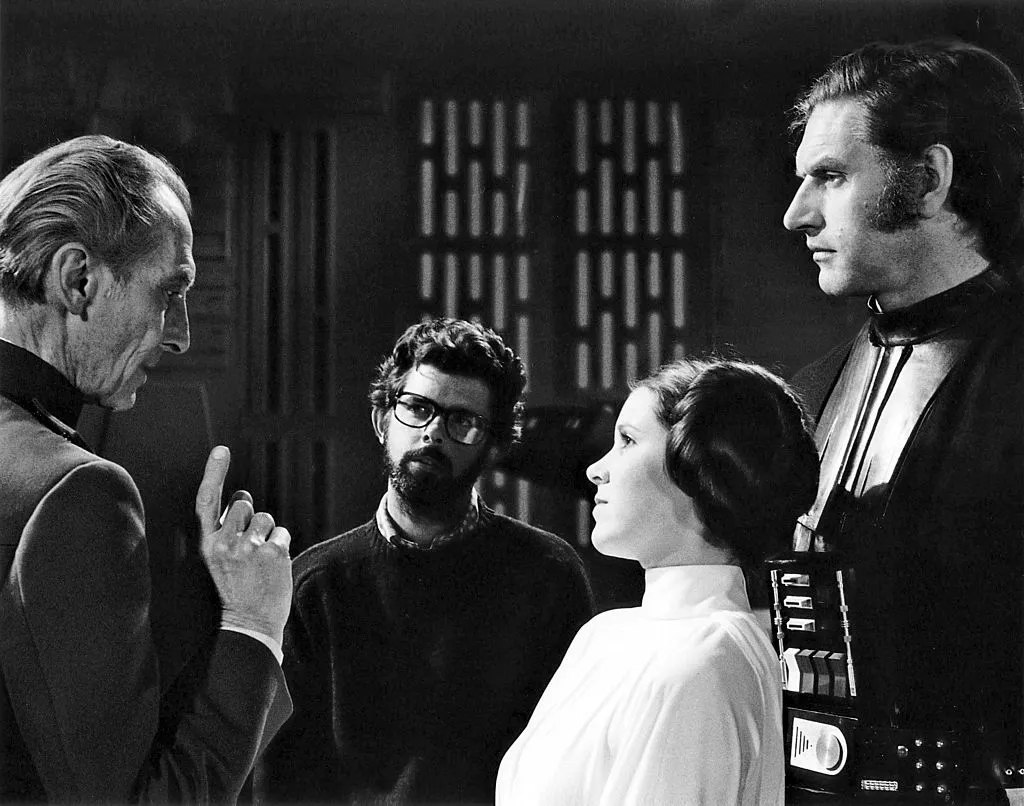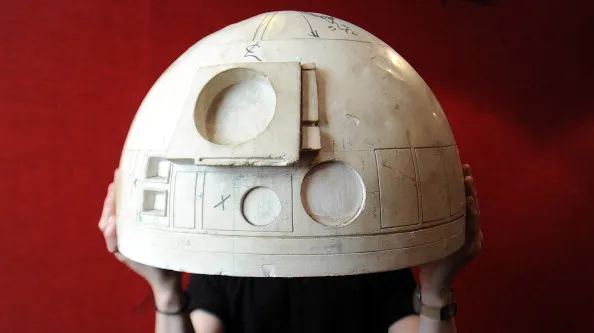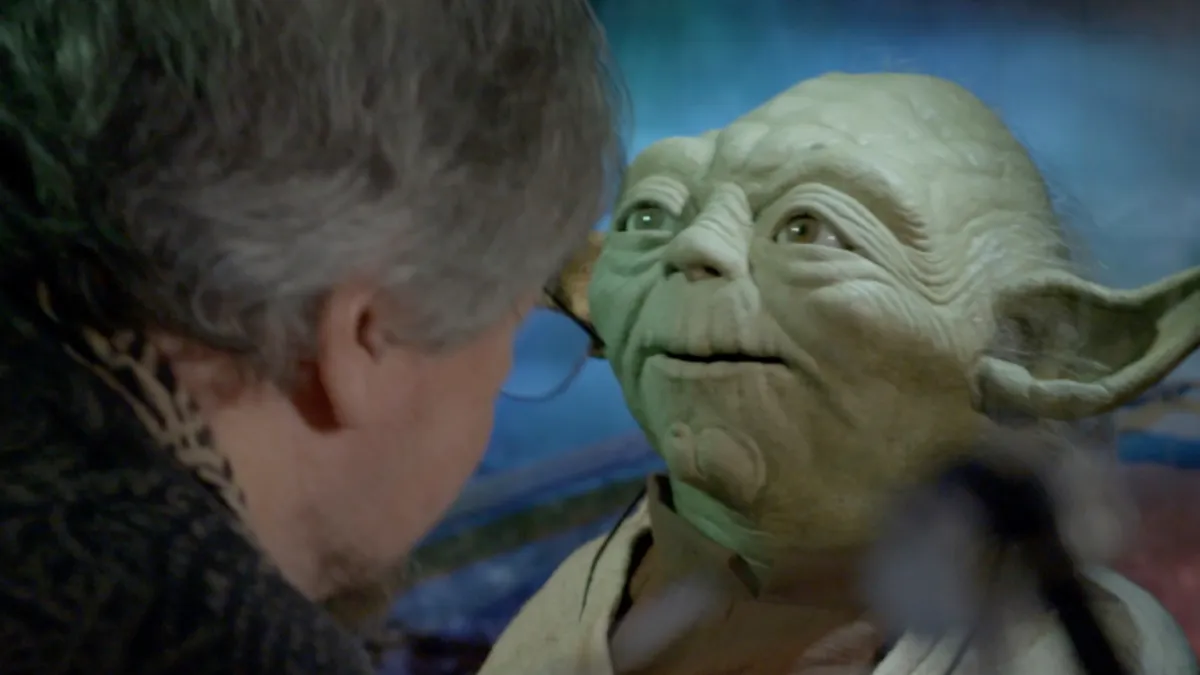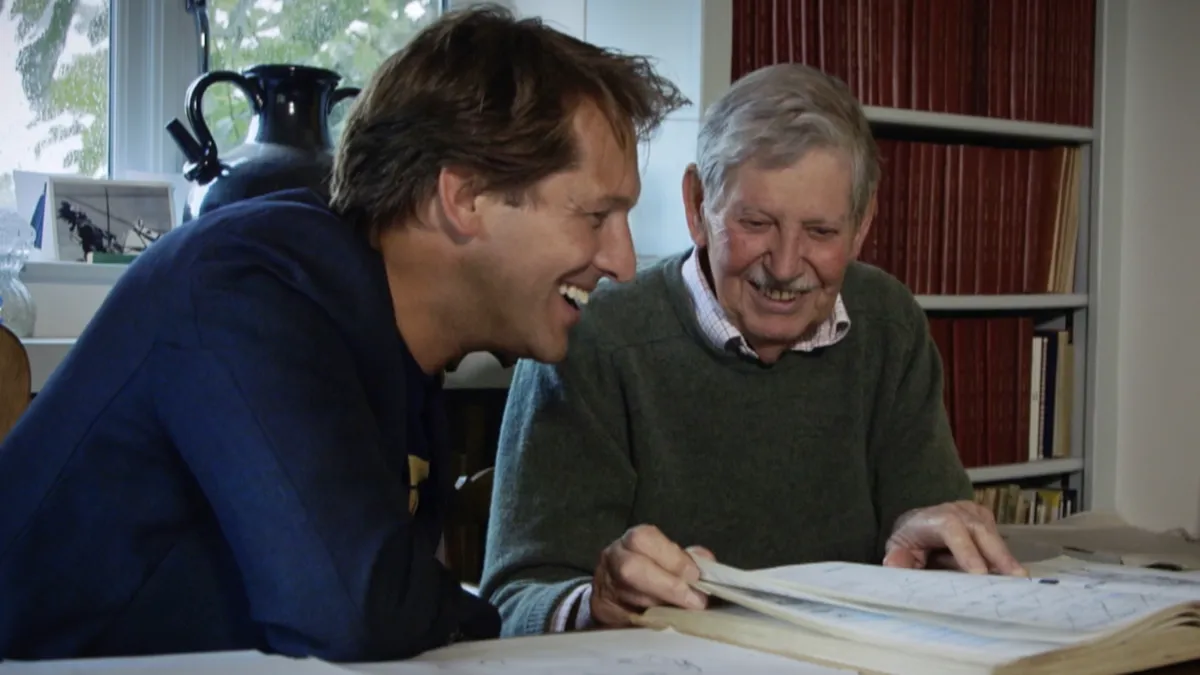David Whiteley is a massive Star Wars fan. You might think it was written in the stars given he was born in 1977, the year of the original film’s release, on 4 May, a date now known asStar Wars Daydue to its similarity to the stirring words spoken between Jedi (may the Force be with you) - but as one of the many millions who queuing around cinemas to watch the new Star Wars film,The Last Jedi, he is not alone. Unlike the rest of us though, he was able to follow his love for the space opera to the very beginning for a new BBC Four documentaryThe Galaxy Britain Built: Droids, Darth Vader and Lightsabers, meeting the producers, set designers and costume designers that brought George Lucas’ original vision to life.
We caught up with him about how theStar Warsfilms became so entrenched in our lives, why the movies are distinctly British, and how the lightsaber, one of the most iconic props in all of cinema was built for just £12.
How did the documentary come about?
I had the idea to look at the British people who took part in the originalStar Warsin February 2016. I kind of always knew that it was filmed at Elstree Studios and bits and pieces were done in the UK, but I hadn't really conceived just how much of it was filmed here and just how much British talent was behind the camera.
When you strip it right back you realise the art department, the production supervisor, costume designer and technicians were British, and they had the task of putting together this space opera for George Lucas, the likes of which the world hadn't seen before.And on a very limited budget.
Why was Britain was chosen to film Star Wars?
Initially it was cost. Costwas the main issue - at the time no major Hollywood studio would invest in George Lucas’ film. He'd done pretty well with the production and direction ofAmerican Graffiti, which was very successful given the budget it had as well. But 20th Century Fox were the only people who said ‘we'll take a chance on this’, and it transpired that filming it in Britain would be cheaper than filming it in Hollywood.
Another deciding factor was that they didn't have enough sound stages available at Fox, so they would have had to use a couple at MGM, maybe more from somewhere else - logistically it wasgoing to be a nightmare, they needed at least seven soundstages! They looked towards Europe and eventually settled on London, and then it fell to British production supervisor Robert Watts to strike a deal. He went to Pinewood first, but they wouldn’t rent the whole place to just one production, so he went to Elstree and they said ‘yes, fine, be my guest’. He got the whole place for £75k - chicken feed really!

What was it about British talent that the filmmakers were after?
You had fabulously talented people in the States and California working on the special effects like making the Millennium Falcon and X-wings fly, but in Britain you had this wealth of talent that made traditional-style films. George Lucas was invited down to New Mexico by some writers who had writtenAmerican Graffiti, working on a film calledLucky LadystarringLiza Minelli and Gene Hackman and Burt Reynolds about prohibition. They had some fabulous sets - big, dusty Western-like sets - and the entire art department was British. George and producer Gary Kurtz fell in love with what they saw and, to cut a long story short, hired the entire art department to start working on Star Wars.
How did they make the iconic objects, sets and aliens in Star Warsfeel so real?
It's interesting. Their budget actually focused their mind to work with what they had, so despite limited resources they were very creative - this ingenuity shone through in what they created. They would look for things that were in themselves interesting.
The late production designer, a wonderful chap called John Barry, came up with this idea of buying tons and tons of aeroplane junk because A. it was light and B. it was cheap. They flew around the country to airfields picking up jet engines and fuselages of planes, bringing them back to Elstree, stripping them all down and basically sifting through it looking for things that looked interesting or different. So much of the sets were built from junk, for example in the cantina on Tatooine, a lot of that is built with the junk from John Barry's idea.
Equally they did the same for things like the weapons. They didn’t want them to look plastic and cheap, so they actually used real weapons, for example the Stormtroopers’ rifle was a sterling sub machine gun with bits of plastic stuck on. The most iconic weapon of all, the lightsaber, weapon of choice of the Jedi knight, was created by a guy called Roger Christian. It was right up to the last minute before filming and he couldn't find anything for the lightsaber. He'd already made Han Solo's blaster, Princess Leia's blasterand all the guns for the Stormtroopers, but there was still this one thing left to make which he knew had to be, as he put it, the Excalibur of Star Wars. He went to this camera shop in London and asked if they had anything interesting and was told to look in a box not opened for years. In it he found five or six handles of an old Graflex 1040 press camera – that is basically Luke Skywalker's lightsaber. All he did with it was put some t-strip rubber around the handle and put a bit of bubble strip from an old calculator on the clip and that was it, done. It’s exactly the same today inThe Last Jedias it was in 1977.
He actually had one Luke Skywalker’s lightsabers when I met him because he bought all of them at the time and kept that one for himself - he said he made the whole thing for only £12. I got a chance to hold it (it's quite heavy actually) and it dawned on me that is the one that Alec Guinness as Obi Wan Kenobi hands to Mark Hamill as Luke Skywalker in 1976 when they were filming, exactly the same one now. It's like ‘hang on, this is it, this isthelightsaber’.
Something so simple, and so iconic…
Exactly, it was something that was gathering dust in a camera shop in north London for 30 years but because of a wonderful guy called Ralph McQuarrie, a fabulous concept artist who did it all for Star Wars, they had an idea of what Lucas wanted.
Of course, there was nothing to reference it to. You didn't have anything in real life or in previous movies that you could say 'oh I like this but can you change it to that'. They were writing the rules from the very beginning and apparently George Lucas saw the whole galaxy, his universe, as being a bit ramshackle and run down. We don’t think of the Millennium Falcon as being a gleaming, gorgeous-looking space ship but as this rusting hunk of junk (although I think it is a gorgeous space ship, but then I’m a Star Wars fan). The whole galaxy, apart from the Imperials, the bad guys, had to have this worn out feel about it, and I think because of the lack of money they were able to scrounge things, junk, to get that look.
How did they bring the aliens to life on screen?
They didn't really know themselves. The studio was run by an amazing guy called StuFreeborn, who worked on all kinds of movies making creatures, and he was tasked with getting a small team together to fill a cantina full of aliens in a very short space of time. I think they had about eight or ten weeks to build all them all, working from 8am to 11pm trying to mould these sculptures.
They had pet names for them like Martians or Crockers. The Martians are ones with the big eyes, like Greedo, the guy that confronts Han Solo, and the Crockers look like crocodiles - I think one of them became Bossk inThe Empire Strikes Back. They were just going flat out to build these things, painting them with toluene paint in a very confined area of Elstree Studios and in a very short space of time. But they were able to fill that cantina with an array of bizarre looking characters.
Do you think they had any idea as to how important and influential their characters would become?
I don't think anyone did at the time, generally across the whole movie. I think that had they realised the depth and breadth of these things and how far they would go, it may have been quite intimidating - ignorance may have been bliss. In my office I have my original Star Wars toys, and all these characterswere designed in a workshop in North London in the mid 70s. We know them now as these iconic Star Wars characters from a galaxy that continues to expand, but at the time they wouldn't have had a clue what it meant, I’m sure.
Would you like to see Star Wars technology in the real world?
Goodness me yes, we would all like to jump to hyperspace, wouldn't we? I'm not sure a lightsaber is the sort of thing you want to see flying around underneath the Christmastree, but yeah, some of that technology is starting to come to the fore and it’s funny how science fiction can become science fact, certainly with the robotics.

At the time of filming they tried to make R2-D2 remote controlled and do all kinds of things, but it didn't work. Roger Christian, the set director told me that when they were filming in Tunisia for the scenes on Tatootine, the remote control was just so temperamental they built a lightweight R2-D2 which they pulled along fishing wire. But you look at the robotics we have now and it's come on leaps and bounds. Just look at the robotics that you have in the latest Star Wars films, let alone what we're seeing being developed around the world with artificial intelligence.
How has the production process changed between the earthy, British film from the 70s to the incredible blockbusters that we have now?
I spoke to the director and the editor of the last Star Wars film,Rogue One, and they said that a lot of the original designs from the 1970s they stuck to - once you've made R2-D2 or C-3PO out of junk you stick to that, because that's what everybody knows and loves - but a lot of what's changed are the budgets, they are of course much higher. The budget for the originalStar Warswas $4m, butRogue Onewas made for $200m - it's a huge amount of money, so the scale of the production is much, much bigger!
Of course, now a lot more is designed on the computer, and you have CGI effects that you can add afterwards. Even if you're building practical sets, practical creature and animatronics, you can design it on a computer first. Back then it was completely different, for examplethe team ran into all kinds of problems trying to make Yoda work. Now you can't imagine why a puppet like that would be so complicated, it would be designed on a computer, but at the time they were ground-breaking bits of animatronics. They made it work perfectly well but you can see on some of the behind the scenes footage on the DVDs, that at the time it was trial and error, working through the night to get stuff done.

I’m sure this does still happen, but of course you got this experience behind you of all those years of people doing certain things that have advanced the technology. The fact they can sit and design things on a computer before they even start to put things together must be a massive advantage.
You speak to a lot of people who produced the films, did you get a sense of what it means to them?
To be fair they are, in my opinion, some of the most talented and creative people you could ever hope to meet or have working on a particular production, but they are just so humble. They have such humility because they say that at the end of the day they were just doing their job, trying to do the best they could with the money, time and resources available. But of course, toStar Warsfans they are royalty. They are part of this incredible bunch of people that actually started the whole thing going.
They are just so humble but so proud to have worked on something that has basically defined a generation and the next generation. It is arguably the most successful film franchise of all time, and they were there at the very beginning. They say they have to pinch themselves sometimes because they can't quite believe they worked onStar Wars. It changed their lives, all for the better.
Was there anything that really surprised you filming the show?
The bit that was most exciting for me was when I met John Mollo, the costume designer who won an Oscar for
We opened these dusty old books and within them were original sketches of the characters we know and love from Star Wars - Chewbacca, Jedi knights, Darth Vader. You're looking at his notes down the side and he's cut something from a magazine about a radio front which then forms a part of Darth Vader’s chest plate, and he's got names down the side like
,
and
and that sort of stuff. Then interspersed are his military drawings and you can see how it all came together – he created the most stunning universe and there they are, just sitting in these books!

The Galaxy Britain Built: Droids, Darth Vader and Lightsabersis on BBC Four, Thursday 21 December at 22:00
Follow Science Focus onTwitter,Facebook, Instagramand Flipboard